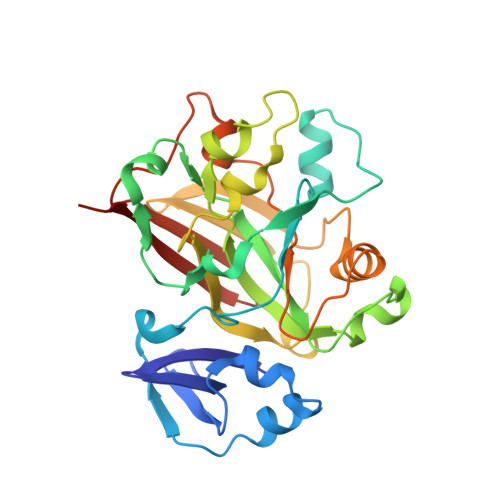Sequence, structure and function-based classification of the broadly conserved FAH superfamily reveals two distinct fumarylpyruvate hydrolase subfamilies.
Hong, H., Seo, H., Park, W., Kim, K.J.(2020) Environ Microbiol 22: 270-285
- PubMed: 31657110
- DOI: https://doi.org/10.1111/1462-2920.14844
- Primary Citation of Related Structures:
6J57, 6J5X, 6J5Y - PubMed Abstract:
Fumarylacetoacetate hydrolase (FAH) superfamily proteins are found ubiquitously in microbial pathways involved in the catabolism of aromatic substances. Although extensive bioinformatic data on these proteins have been acquired, confusion caused by problems with the annotation of these proteins hinders research into determining their physiological functions. Here we classify 606 FAH superfamily proteins using a maximum likelihood (ML) phylogenetic tree, comparative gene-neighbourhood patterns and in vitro enzyme assays. The FAH superfamily proteins used for the analyses are divided into five distinct subfamilies, and two of them, FPH-A and FPH-B, contain the majority of the proteins of undefined function. These subfamilies include clusters designated FPH-I and FPH-II, respectively, which include two distinct types of fumarylpyruvate hydrolase (FPH), an enzyme involved in the final step of the gentisate pathway. We determined the crystal structures of these FPH enzymes at 2.0 Å resolutions and investigate the substrate binding mode by which these types of enzymes can accommodate fumarylpyruvate as a substrate. Consequentially, we identify the molecular signatures of the two types of FPH enzymes among the broadly conserved FAH superfamily proteins. Our studies allowed us to predict the relationship of unknown FAH superfamily proteins using their sequence information.
Organizational Affiliation:
Structural and Molecular Biology Laboratory, School of Life Sciences, KNU Creative BioResearch Group, Kyungpook National University, Daegu, 702701, Republic of Korea.

















